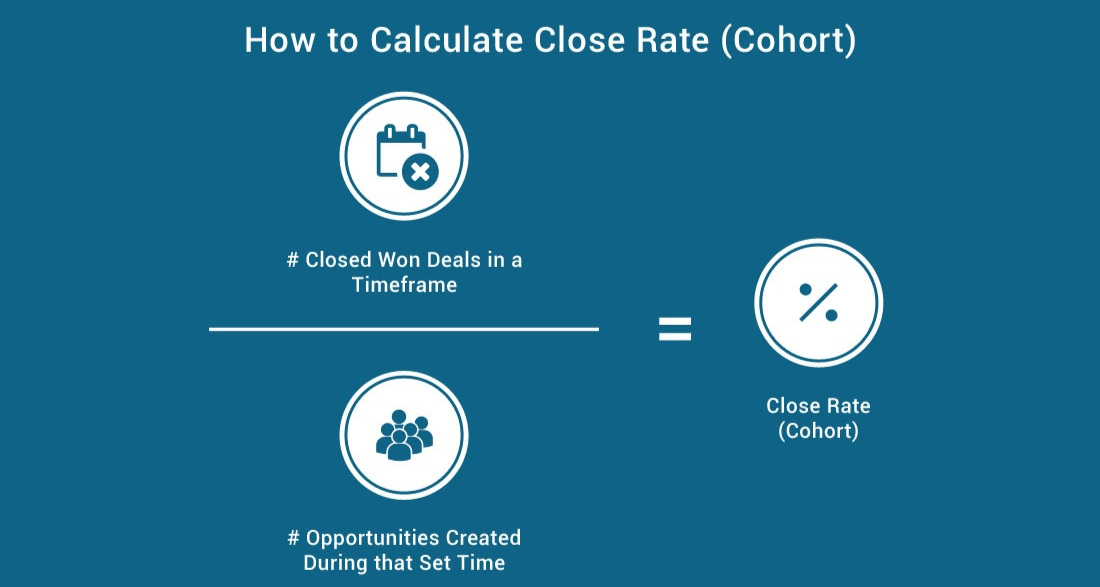How to Calculate Cohort-Based Close Rate

This blog post was originally published by Rekener, now a Brainshark company.
A cohort-based close rate measures how many deals you won, divided by the total number of opps created.
To calculate a cohort-based close rate, you take the number of closed won deals that were created in a particular time period and divide by the total number of opportunities you created in that period.
For example, if you created 10 opps in September, and have won 6 of them, then your cohort-based close rate from September would be 6 / 10 = 60%.
To measure cohort-based close rate with Salesforce data, count the number of opportunities that have a created date in the period, then count the number of opportunities won that have a created date in the same period. Then divide the opportunities won by the opportunities created.
To measure cohort-based close rate with HubSpot CRM data, count the number of deals that have a created date in the period, then count the number of deals won that have a created date in the same period. Then divide the deals won by the deals created.
Sales scorecards calculate cohort-based close rates automatically, and can measure it by sales rep, by account, or any other breakdown. Check out our scorecards solution to learn how you can calculate cohort-based close rate by sales rep automatically.
Looking for more sales metrics know-how? Our comprehensive Sales Metrics Glossary will show you how to calculate 30 critical KPIs using CRM data.

